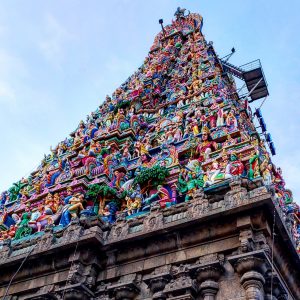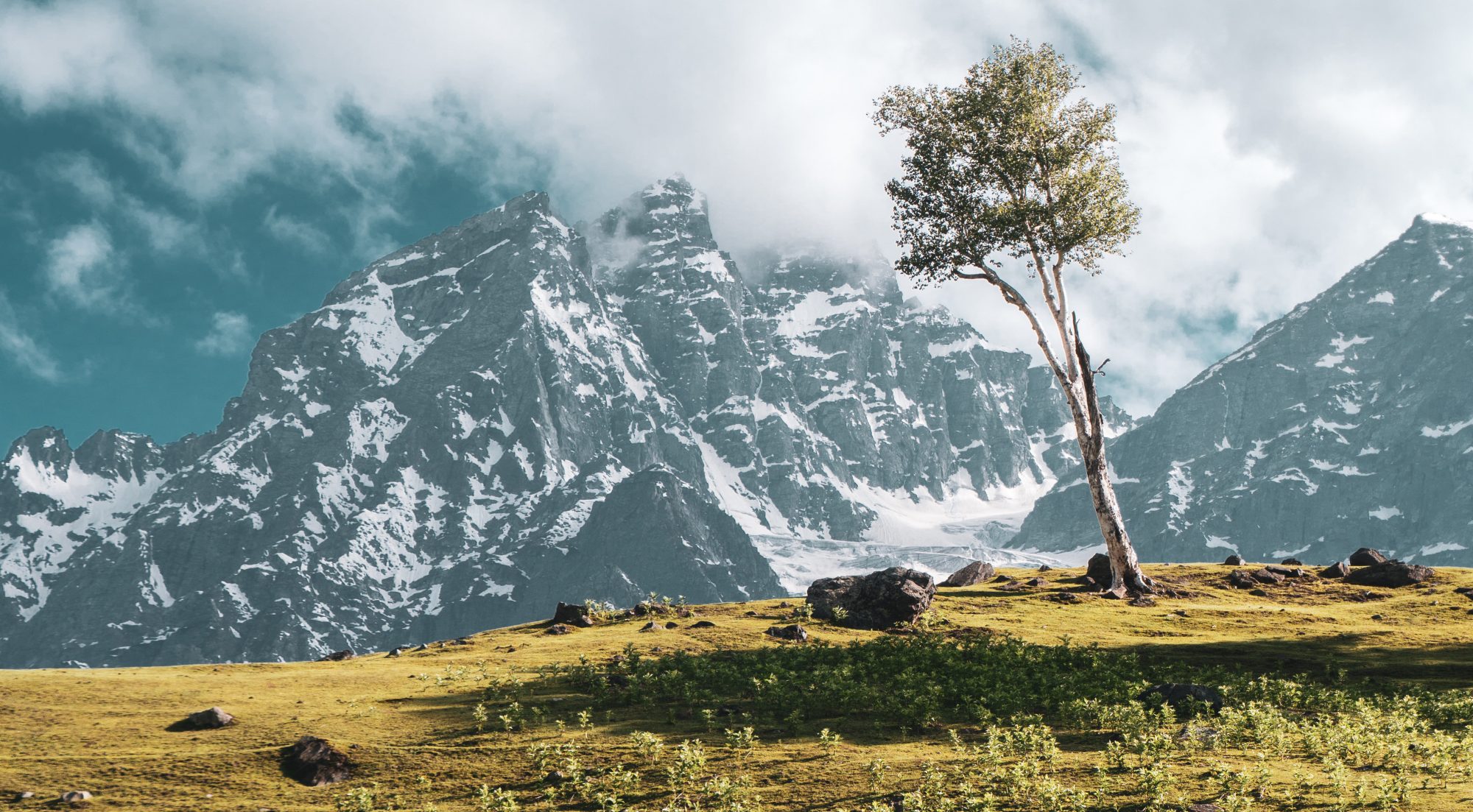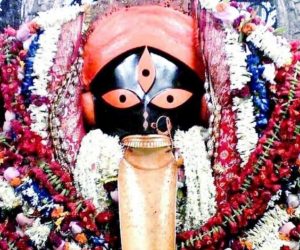Mylapore owes its name to the peacocks (Mayil, in Tamil) that once roamed the area freely. Historical references go back to at least the 7th Century AD, the time when the famous Kapaleeshwarar temple was built here by the reigning Pallava kings of the area. The towering temple to Shiva and its sacred tank (Mylapore Tank), with the famed mada veedhis (streets) and busy shops surrounding it, is the center of Mylapore’s many attractions. Inside are the shrines of the Divine Mother Karpagambal, and Shiva as Kapaleeshwarar. Traditional belief has it that whoever visits Karpagambal would never have to go hungry. The temple celebrates its famous nine day Panguni (Spring) Festival in March/April every year, when the streets stay jam-packed for days on end. Present day Mylapore is a bustling residential neighborhood where much of this old-world charm and religious fervor remain preciously intact.

Speaking of temples, in a lighter vein, it is said that you only have to trip and fall on a Mylapore street, and get up to find yourself at the doors of a temple. You may not have to walk more than a few minutes on most streets here before you can find a shrine to your favorite god or goddess.
One way of getting to know Mylapore, and a delicious one, is a food walk, which can tantalize with a fascinating range of assorted vegetarian treats. Several of Mylapore’s famous eateries (messes) roll out patently traditional items, like the kozhukattais, beloved treat of Lord Ganesha, made as rice dumplings with a sweet (coconut and jaggery) or savory filling. The seventy year old Rayar’s Café on Arundale Street is a must stop as well. This hole in the wall is famous for its idlis, vadas and Mysore bondas, not to mention the coconut chutney. I remember eating here with my dad one summer afternoon as a boy of five, maybe less, where I couldn’t decide which was hotter, the dosa or the weather!
Then there’s the Jannal Kadai (the Window Shop), right next to Kapaleeshwarar temple, where food is served out through a window. After morning devotions around the temple during the sacred Tamil month of Margazhi (December/January), it makes superb sense to fight the morning chill with Jannal Kadai’s delicious breakfast menu of bajjis, pongal and dosa. Not far from here is the Kalathi Stall, famed for its rose milk. And of course, one can always find plenty of places for a cup of traditional filter coffee, served in tiny steel tumblers and davaras, to heighten the experience.
Should you go overboard with all the food, a visit to Dabba Chetty Kadai is in order. This 100-year-old shop on Kutchery Road is your ready resort for all kinds of native herbal and country medicine, stacked in neat tin containers (or dabbas). Old timers in Mylapore can swear to its efficacy in combating all common ailments, and thanks to its formulations, report never having had to take to Western medicine. The dabbas may not be labelled, but the shop staff know how to reach out blindfolded for the exact medicine you need. Their Diwali leghyam, a concoction to correct the imbalances from festive eating around Diwali time, is sold only for a couple of weeks around the festival, but is arguably their hottest selling item of the year.
The December music festival is another of Mylapore’s (and Chennai’s) landmark events. The venerable Music Academy hosts some of the top artistes of the Carnatic music pantheon, but is by no means the only venue in town. In the vicinity of Mylapore are perhaps a dozen or so music sabhas (clubs) to cater to Chennai’s famed musical cognoscenti at this time of year. Much of the music is devotional, and it is a known fact that crime rates dip to near zero at this time of year. It’s perhaps got to do with the many gods and goddesses who descend upon the city to hear all of the divine music!
Mylapore wouldn’t be half as interesting though but for its amazing shops and bazaars, teeming with people, where you can find everything under the sun to never have to leave Mylapore your entire life. There’s rows of stalls selling bindis, bangles and other trinkets. Flower sellers and vegetable vendors line the sidewalks. Saree shops famous for their silks, like Rasi’s and Nalli’s, are perennially popular, as are jewelry stores like Nathella’s and Sukra’s. There’s Ambika Appalam for spice powders and papadams, Sri Vidya Manjal Kumkumam store for turmeric and vermillion, Vijaya Stores for school books, and Grand Sweets for snacks and tiffins. The shops at Luz Corner purvey clothes and cosmetics, and gift items and articles of everyday use. Nehru News Mart is a popular newsmagazine store, while Giri Trading is famous for books and religious items, and Sapthaswara Musicals sells traditional musical instruments. All of these, and several more, have carved a permanent niche for Mylapore, drawing locals and tourists alike.
If Chennai exudes a conservative, erudite aura of learning, Mylapore has a large part to do with it. The TamBram community can be found in full fledged flourish here, its storied success owing as much to a natural penchant for academics as an inherited fondness for curd rice. The TamBram heritage places a premium on culture and intellect, aesthetics and brilliance. Every other family can boast of a relative who’s immigrated to the United States or some such cold destination abroad. But these migratory snowbirds are inevitably back for the December holidays, to relive traditional memories and revel in the mild weather.
Mylapore’s ethos might be primarily Hindu, but it is also home to old mosques, as well as Luz Church and the Santhome Basilica, two iconic churches that date back to around half a millennium ago. Furthermore, the splendid new Universal Temple of Sri Ramakrishna, adjacent to the century old Sri Ramakrishna Math, provides a perfect modern day amalgam of spiritual harmony.
In cosmopolitan changing Chennai, Mylapore is a microcosm for all things traditional, continuing to thrive and blossom as fine as ever. Its way of life draws gladly from the tried and tested goodness of the past. The old remains adaptable, but has never really had to make way for the new. Rather, it is inevitably the new, which with time, comes to acknowledge the resilient wisdom of the old. In this ever ongoing exchange and alchemy of old with new, Mylapore is an abiding home for several excellent traditions from the past. Be it with its temples or festivals, Carnatic music or vegetarian cooking, the environs of Mylapore are always ready to welcome you, ever so gently, to the finer nuances and joys of life.

